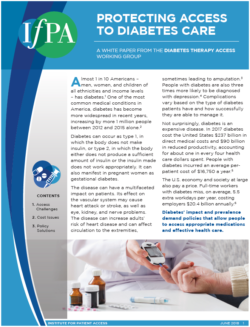 Almost 1 in 10 Americans – men, women, and children of all ethnicities and income levels – has diabetes.1 One of the most common medical conditions in America, diabetes has become more widespread in recent years, increasing by more 1 million people between 2012 and 2015 alone.
Almost 1 in 10 Americans – men, women, and children of all ethnicities and income levels – has diabetes.1 One of the most common medical conditions in America, diabetes has become more widespread in recent years, increasing by more 1 million people between 2012 and 2015 alone.
Diabetes can occur as type 1, in which the body does not make insulin, or type 2, in which the body either does not produce a sufficient amount of insulin or the insulin made does not work appropriately. It can also manifest in pregnant women as gestational diabetes.
The disease can have a multifaceted impact on patients. Its effect on the vascular system may cause heart attack or stroke, as well as eye, kidney, and nerve problems. The disease can increase adults’ risk of heart disease and can affect circulation to the extremities, sometimes leading to amputation. People with diabetes are also three times more likely to be diagnosed with depression. Complications vary based on the type of diabetes patients have and how successfully they are able to manage it.
Not surprisingly, diabetes is an expensive disease. In 2017 diabetes cost the United States $237 billion in direct medical costs and $90 billion in reduced productivity, accounting for about one in every four health care dollars spent. People with diabetes incurred an average per-patient cost of $16,750 a year.
The U.S. economy and society at large also pay a price. Full-time workers with diabetes miss, on average, 5.5 extra workdays per year, costing employers $20.4 billion annually.

